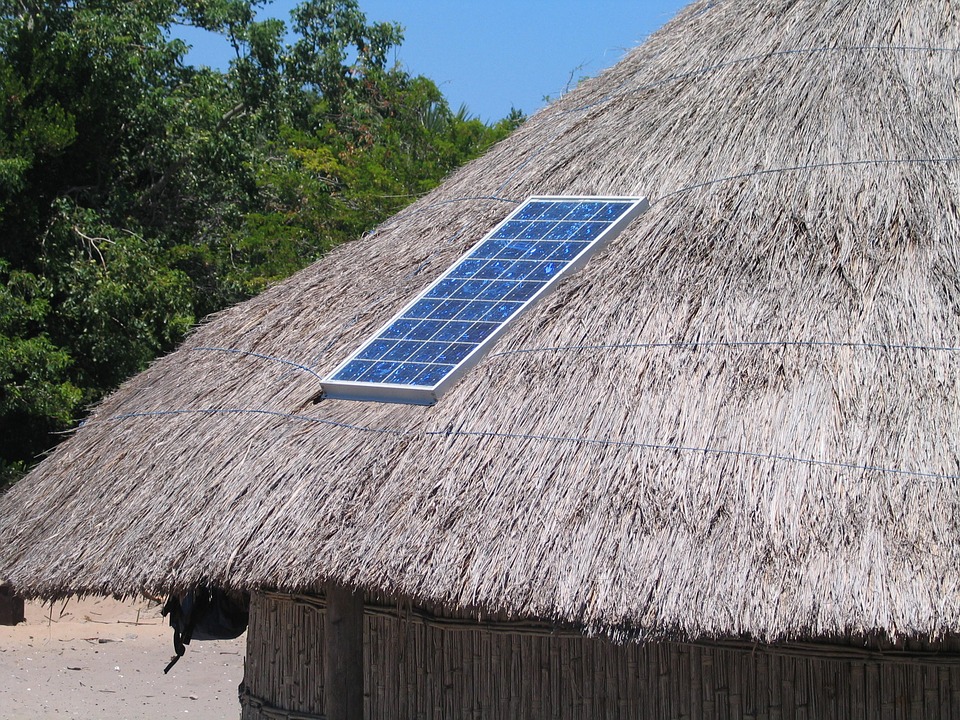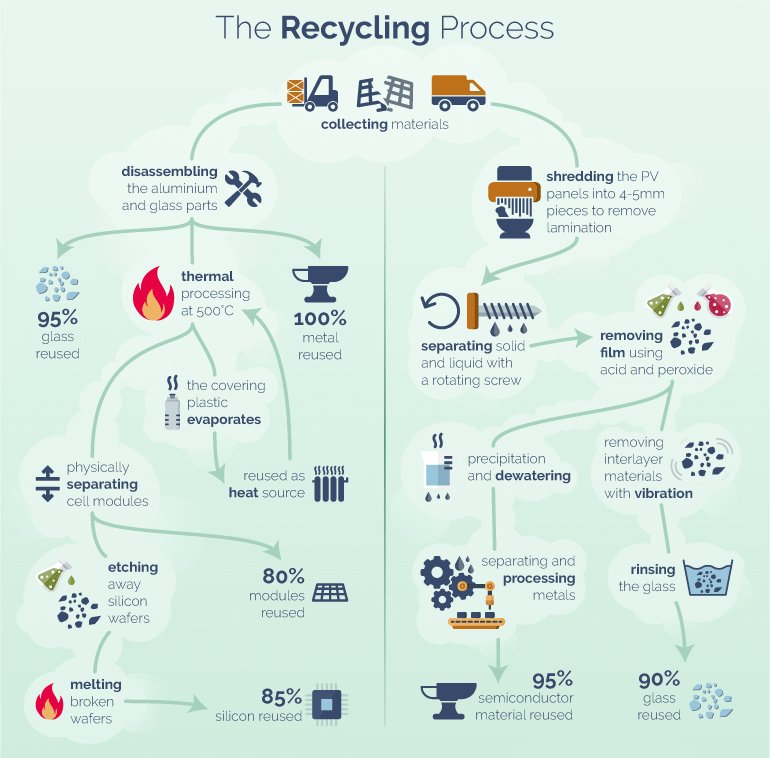Most solar panels have a useful life of at least 25 years. Panels from distinguished manufacturers maintain warranties for 25 years. Yet, even with a 25-year production warranty, early solar adopters will vouch that their systems are producing electricity long after the 25-year life span. But eco-friendly consumers do ask what about solar panel waste. What happens with the panels once they are no longer producing energy? There is a concern that panels just are added to landfills after 25 years. Luckily, panels continue to give beyond a homeowner’s roof.
The Lifetime of Solar Panels

The lifetime of a solar panel is about 30 years before decommissioning. Most manufacturers will guarantee only a decrease in efficiency in 10% the first 10 to 12 years of a panel’s life and only 20% when reaching. However, experience shows that in reality the efficiency of a panel only drops a mere 6% to 8% after 25 years. This suggests that high quality panels will last closer to 40 years than the guaranteed 25.
Solar Panels Re-purposed Before Recycled

After a solar panel has served its useful life on your roof, most panels are up-cycled. One option is EnergyBin. Energy Bin is a business-to-business platform for solar companies to list, or seek, solar components for sale or resale.
Another way solar panels are repurposed is through missionary work throughout the world. Once a panel reaches its warranty lifespan, organizations, such as Working For The Son Solar from Fresno, CA, will use degrading panels on volunteer projects, where any amount of energy helps. WRTSS has kept more than 100 tons of solar materials on roofs or on land mounts, providing energy for people in need.
Disposal of Solar Panels

Photo Credit: IndiaMart.com
The solar cell manufacturers are bound by law to fulfill specific legal requirements and burdens of recycling standards. This is to ensure solar panels do not become a burden to the environment. In fact, it is believed that if solar panel processes were not in place, there would already be 60 million tons of PV panel waste. Waste that would be lying in landfills by 2050. There is also continuing research being done to determine more efficient recycling options.
Solar Panel Waste
In California, Senate Bill 489 passed back in 2015, which designated PV solar panels as hazardous materials, meaning the technology cannot be disposed of in landfills. Hence, different strategies for recycling are available for different types of panels. Silicon-based solar panel recycling allows for almost all of the glass to be recycled and all external metal parts are reused for remolding cell frames. Then extreme heat is used to further process the silicon particles, which can be used again to manufacture new silicon modules.
A Process

Scientists are still exploring ways in which solar PV panels can live long beyond their guaranteed 25 years of life. We know that higher end panels can produce energy nearly 15 years beyond what the manufacturer promotes. There are also a growing number of organizations that are learning how to upcycle and reuse panels to provide energy for underserved communities. Finally, new technology in recycling is creating paths for recycling almost 100% of a panel. The important takeaway is that your panels will not only contribute to cleaner air and will be re-used, recycled and continue providing for a cleaner country.
Here are some articles you may find helpful:
Top 10 Questions You Should Ask Any Solar Company
What are my Solar Finance Options?
Why are Solar Mounting and Racking Systems So Important
Do Solar Panels Add Value to My Home?
An Update on Tesla and Solar City
Recommended Video:


Leave a Reply